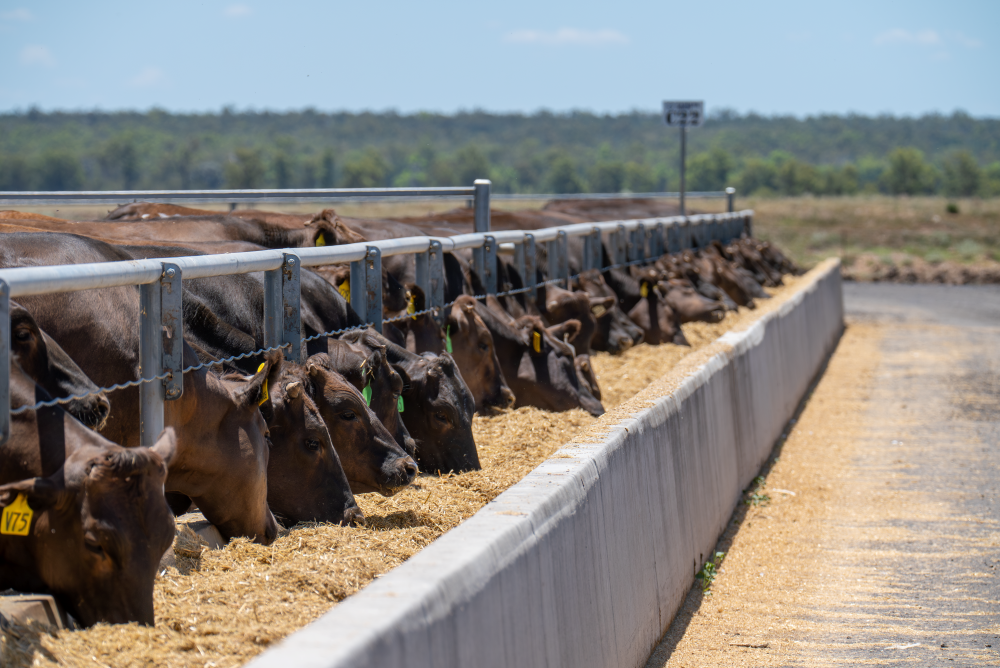Wool market carries confidence into final sale before Christmas
Australia’s wool market posted another strong performance this week, with all micron categories attracting solid support across the three selling...
2 min read
 Matt Dalgleish
:
May 7, 2025
Matt Dalgleish
:
May 7, 2025

In our last instalment we undertook pricing analysis on the F1 Wagyu sector. This piece moves to the supply side of the equation, with a focus on the growth in the Wagyu sector in recent years.
One handy source utilised to demonstrate growth in the Wagyu breed is the Australian Registered Cattle Breeders Association (ARCBA) database which highlights several surges in Wagyu registrations over the last decade. In their most recent update total Wagyu registrations are nearing 35,000.
A comparison to official registrations for other breeds shows that Wagyu registrations have been growing alongside growth seen in total registrations of all breeds. The ratio of Wagyu to all other breeds highlights that the Wagyu component of registrations has been increasing at a quicker rate. As a proportion of total breed registrations Wagyu now sit at around 13.3% in 2023, up from 9.5% a year earlier.

Indeed, in terms of official cattle registrations at ARCBA the growth in Wagyu cattle since around 2016 has been rather extraordinary with a 232% increase demonstrated over the last seven years. Angus, Brahman and Simmental also saw respectable increases to cattle registrations over this timeframe, but nowhere near the Wagyu expansion.

An assessment of the trend in cattle held on feed for more than 300 days demonstrates why there has been such interest in the Wagyu breed in recent years. Cattle on feed data since 2015 broadly highlights the Wagyu component of cattle on feed, as those cattle likely to be held beyond 300 days are almost all exclusively Wagyu types from F1 through to Fullbloods.

As the numbers of cattle on feed for more than 300 days demonstrates there was a surge in 2018 from around 100,000 head to nearly 200,000 head that coincided with the huge increase in F1 Wagyu cattle nationally and a period of significantly reduced F1 Wagyu premium prices during the 2018/19 period.
On a percentage basis the proportion of Wagyu breeds in the feedlot sector lifted from around 3% in 2017 to 6%-7% through the 2018 to 2022 period. In recent years the proportion of Wagyu breeds in the feedlot sector has lifted toward 10%.

The ARCBA isn’t the only measure of Wagyu growth that can be assessed. In the last few years Meat & Livestock Australia (MLA) have published a cattle producer intentions survey that includes an estimate of breeds on hand. In terms of cattle breed proportions nationally the chart below shows the ARCBA proportions from 2023 versus the most recent MLA breed proportions as per their 2024 report.

Wagyu types are the third highest breed based on ARCBA registrations and the fifth highest breed type according to the MLA breed type data, sitting at around 4.8% of the national herd. Compared to 2022 MLA surveys the Wagyu component of the national herd has eased slightly from a 4.9% share of the herd in 2022 to 4.8% in 2024.

Certainly the anecdotal discussion among Wagyu and feedlot players suggest that in the last 6-9 months Wagyu feedlot pens have not all been replaced with Wagyu types as the global market for Wagyu saw some price pressure throughout the 2024 period. Indeed, looking at the MLA breed data changes from 2022 to 2024 by number of head rather than share of herd shows that the Wagyu sector may have a slight pullback in numbers in recent years.

As at the end of 2024 the number of cattle on feed beyond 300 days sat a little bit above 300,000 head nationally. However, current “guesstimates” put this figure at around 270,000 to 280,000 as at the end of Q1, 2025. The most recent MLA producer survey data trends tend to back this up too.
All things considered it seems like a breather is being taken by the Wagyu sector while global supply and demand readjusts. However, the longer term growth prospects for the sector still look very promising.
Matt Dalgleish is a director of Episode3.net and co-host of the Agwatchers podcast.
.png)
Australia’s wool market posted another strong performance this week, with all micron categories attracting solid support across the three selling...

The latest ABARES outlook for livestock products has sheepmeat production dropping for the 2025–26 financial year, pushing prices higher and...

Australia enters 2026 with both the beef and sheepmeat sectors positioned at significant turning points shaped by evolving supply cycles, global...